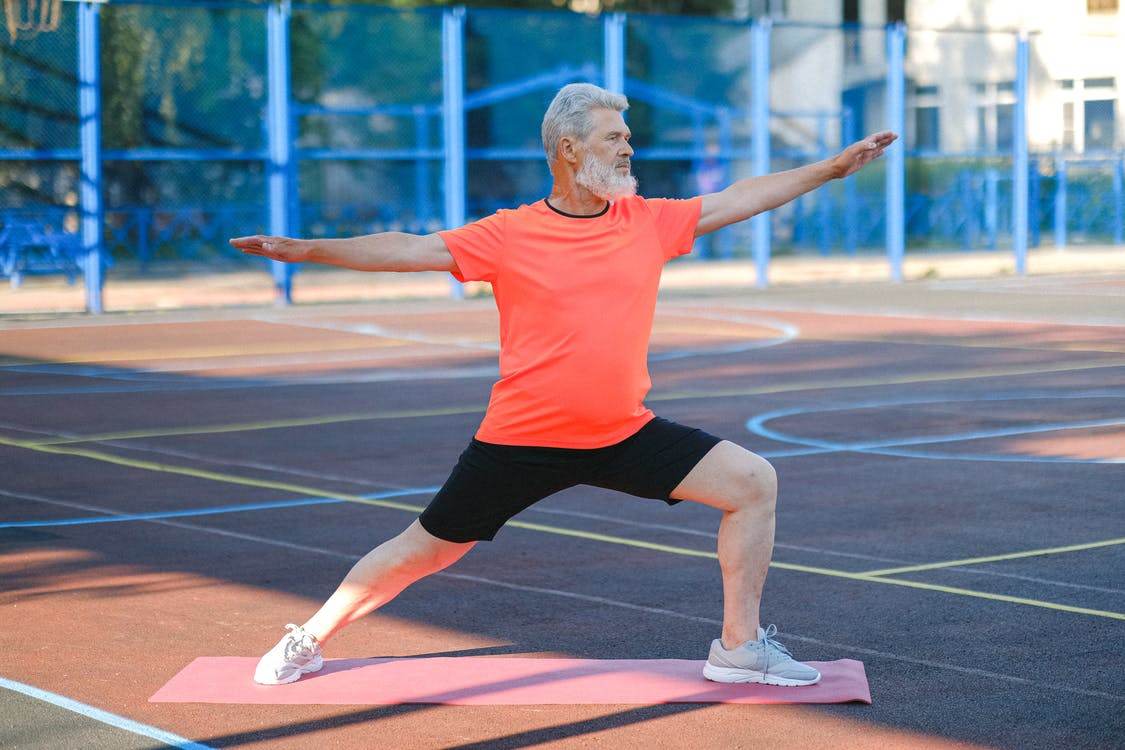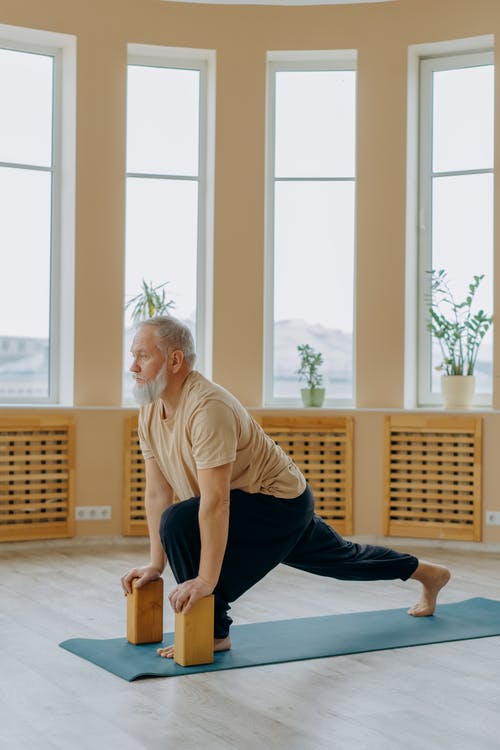Health experts all agree that stretching as we age is a good thing but exactly what are the anti-aging benefits of stretching?
When it comes to health, there are plenty of ways to improve blood flow, including stretches. As we age, we may experience a variety of blood flow-related health issues. Proper stretching will help to lower blood pressure and stimulate the parasympathetic nervous system. For example, it can help alleviate nightly leg cramps, which are painful involuntary muscle contractions that can occur in the foot, thigh, or calf. Nightly leg cramps are a common occurrence among older adults; approximately one third of these individuals will experience them once or twice a month.
Static stretching
Static stretching (StS) is an exercise technique in which a muscle is held in a lengthening position for a specific amount of time. Although this type of stretching is widely used, the anti-aging benefits are controversial. Although it is widely practiced, there has been a long-standing debate over its effects. The most recent studies have shown that StS has minimal negative effects on strength and power.

While a number of studies have suggested that static stretching has anti-aging benefits, it is also a useful tool for athletic training. In sports, static stretching can be used as a warm-up, a prehab routine, or during a performance warm-up. Its benefits go beyond muscle hypertrophy, and are useful for improving performance, strength, and flexibility. It is also a good way to combat cultural biases about the benefits of stretching.
Static stretching can be a good way to improve your range of motion and increase your flexibility. If performed daily, stretching can help you avoid stiffness and improve performance. Stretching can improve your range of motion, which in turn makes it easier to perform everyday tasks, such as walking or jogging. Additionally, static stretching is good for people who have recently started exercising, as it helps improve their range of motion and eases the mind.
The anti-aging benefits of static stretching are numerous. Its benefits include improving muscle performance and reducing stress. As an added bonus, it can also lower the risk of injury. In addition to improving range of motion, static stretching helps prevent injury. By following guidelines and avoiding injuries, the practice can promote better movement quality and prevent injury. These guidelines are a great start for maximizing the anti-aging effects of static stretching.
While many people believe that dynamic stretching can improve performance, further research is needed to determine whether the benefits are actually a reality. In a study that included participants who perform static stretching, they significantly improved their sprint time, and lowered the time to peak force. This result was seen in athletes who were previously unaffected by static stretching. In contrast, those who performed dynamic stretching did not experience any performance decrement. However, when a warm-up was performed before exercise, the performance decrement of static stretching was reduced.
Preventing injury
The first key to preventing injury when stretching for anti aging is to avoid the most common injuries associated with stretches. Although some studies have indicated that pre-participation stretching increases flexibility, these studies do not prove that it decreases risk of injury. In fact, some studies have shown that stretching increases risk of injury and impairs performance. For this reason, it is essential to carefully consider a range of potential injuries when evaluating the efficacy of stretching.
When stretching for anti-aging purposes, it is important to remember that some of the common injuries associated with stretching are not actually injuries themselves. Rather, they are the result of a restriction of range of motion. This restriction is often the underlying cause of the injury. When performing stretching exercises, it is important to remember that elongating the tissue will not be meaningful if it has become pathologically seized.
While there are several ways to perform anti-aging stretches, many people don’t know what to look for when performing such exercises. Ballistic stretching, for example, involves bouncing the muscle to the end of its range, then releasing the momentum that created the movement. While this may seem like an effective way to perform stretching, the problem with ballistic stretching is that the body can’t withstand its momentum, which can cause injury.
While some studies have shown that stretching can improve mobility, there is an additional danger. Using excessive force to stretch can damage your muscles and even result in an ugly face. Stretching should be done gently and at regular intervals. Moreover, overstretching should never cause pain. If you are experiencing pain while stretching, stop immediately and reduce your tension. Overstretching should never be painful, and it is crucial to vary muscle groups during anti-aging exercises.
While there are many benefits to a consistent routine of long-term stretching, the short-term effects are not worth the long-term risks of overdoing it. The duration of any stretches must be at least three times longer than the desired duration to reap maximum benefits. The more time a muscle is stretched, the more sarcomeres it has acquired. Likewise, the longer a stretch is sustained, the greater the risk of injury.
Relieving pain
In addition to the anti-aging benefits of stretching, these exercises also increase circulation, relieve pain, and improve flexibility. You can use static or dynamic stretching techniques. Static stretches are used before and after exercise. Passive stretching involves holding a stretch in a static position for a few seconds, and dynamic stretching involves bouncing at the end of the stretch. If you feel pain during stretching, stop and consult a healthcare provider.
The anti-aging benefits of stretching help older adults avoid painful conditions related to their joints. Stretching exercises help to develop strength and increase range of motion, which decreases the risk of a fall. As you age, keep your hamstrings, hip joints, and quadriceps flexible. Good posture is also promoted through stretching. In addition, stretching helps to loosen muscles, tendons, and ligaments.
Stretching helps relieve back, hip, and leg pain, as well as improve range of motion. It can also improve mood, and even enhance cognitive performance. By improving flexibility and range of motion, stretching can also help relieve pain associated with age. You can perform these exercises at home or at the office, or anywhere else. Whether you do them before or after a workout, stretching can be a great part of your daily routine.
Apart from preventing back pain, stretching can also help in relieving sciatica, a painful condition in the lower back that causes numbness and tingling in the leg. Other types of pain associated with poor posture can be treated with stretches. Regular stretches can improve range of motion, improve posture, and give you more energy. Dynamic stretching, meanwhile, incorporates movement to increase the stretch and lengthen muscles.
Check out this interesting article on another men’s health topic: My VigRX Plus review

